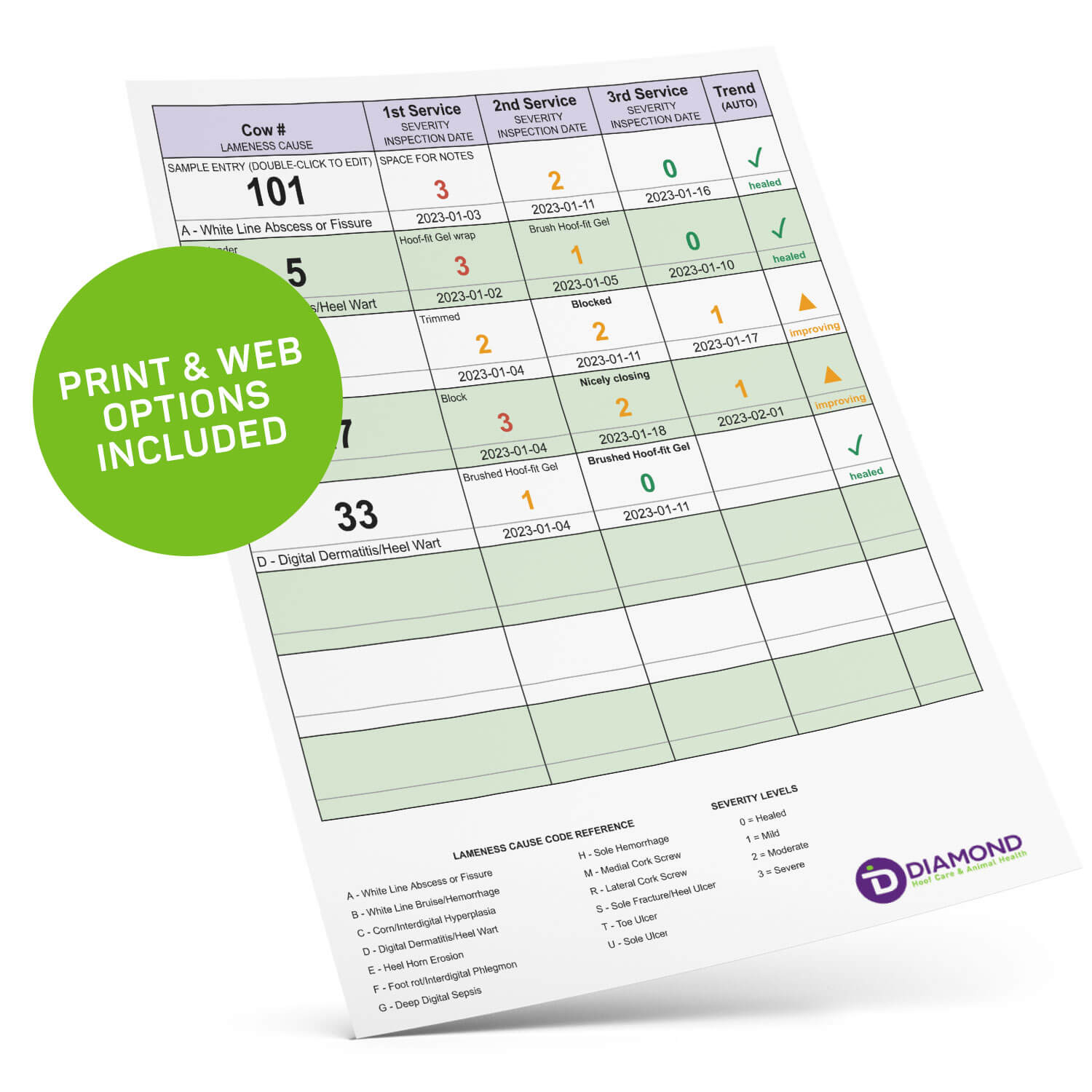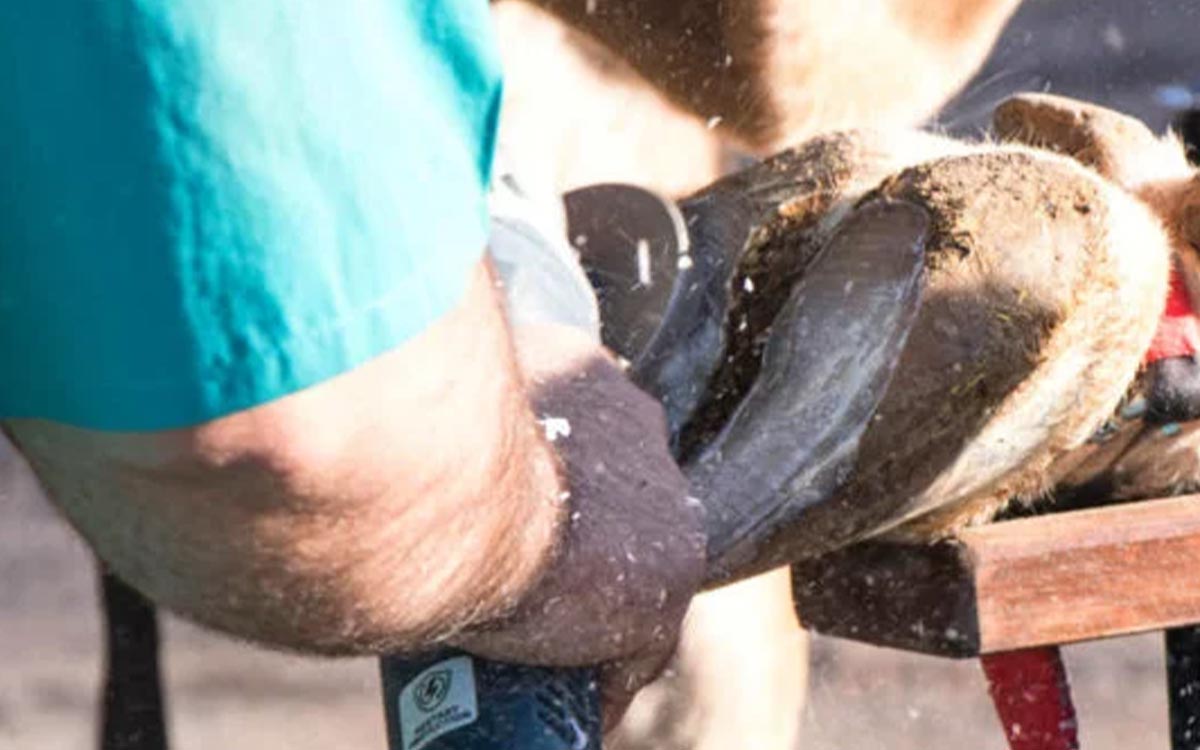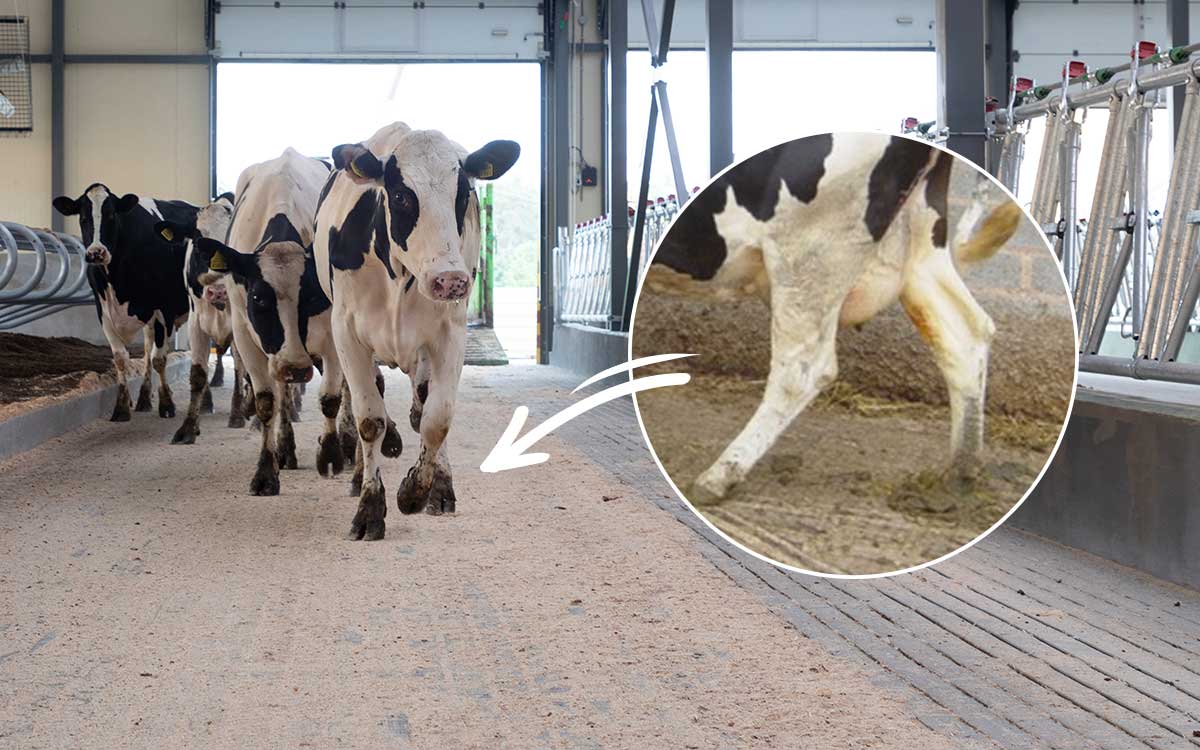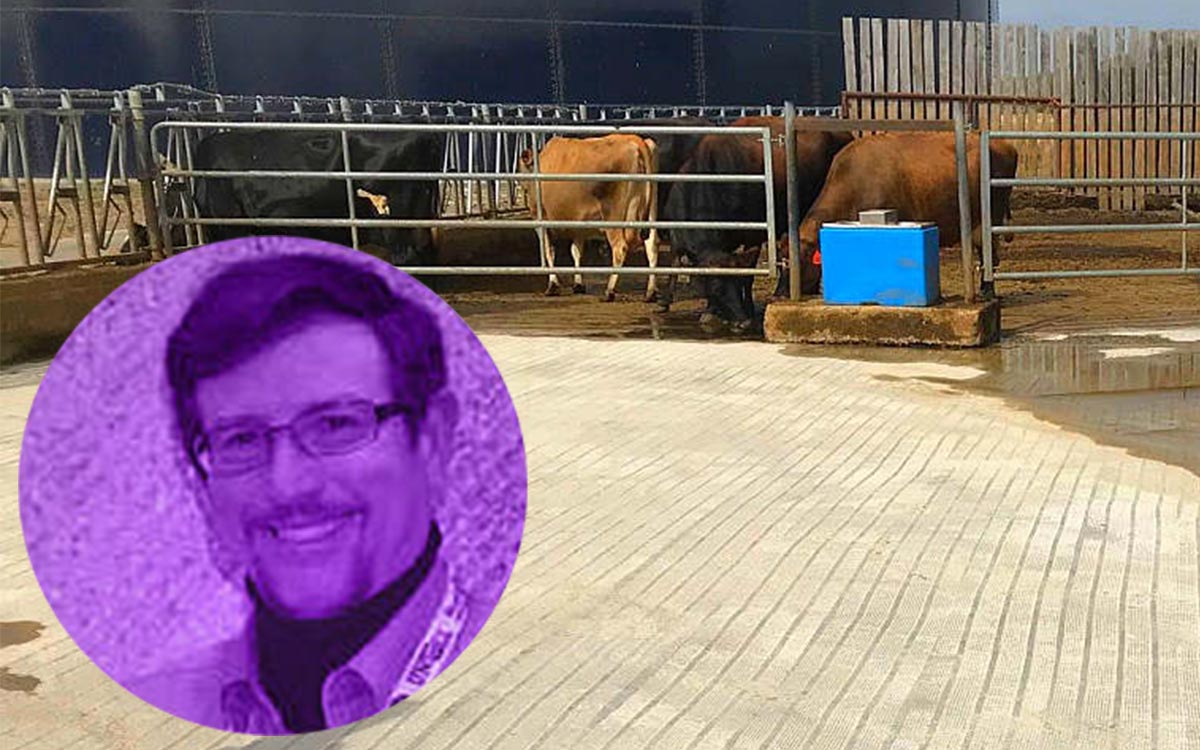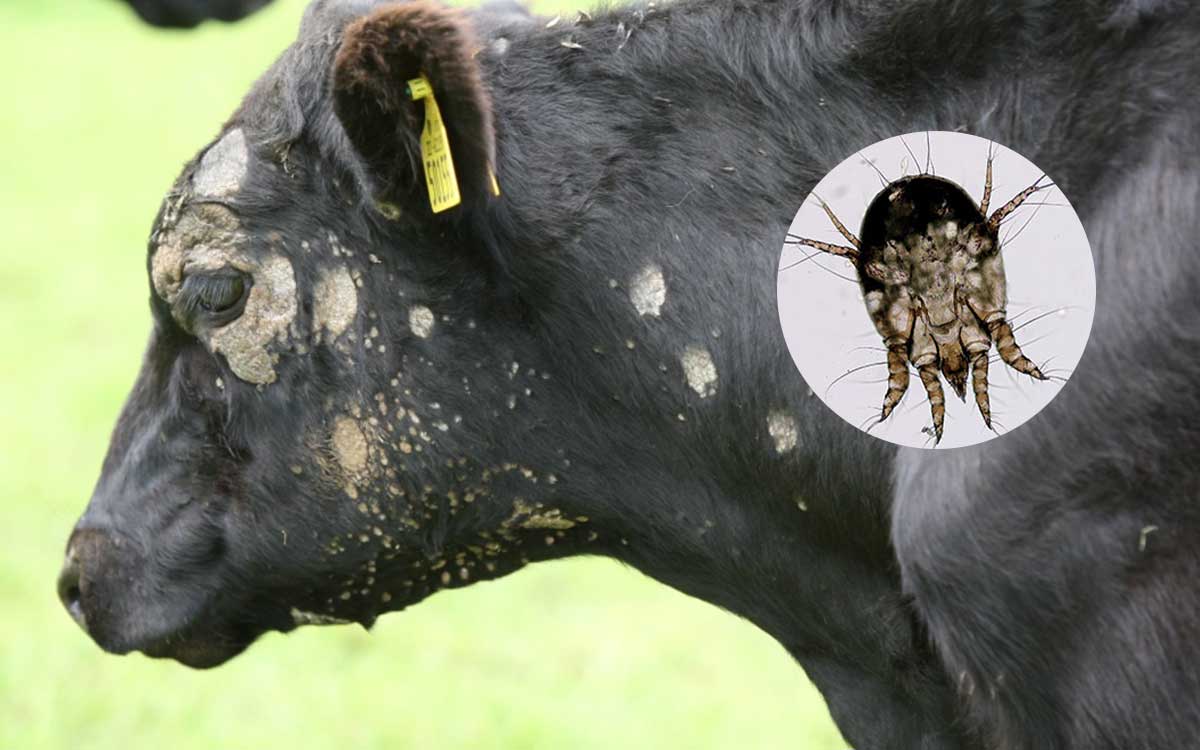When the subject of hoof care arises during on-farm visits, a full to-do list is often shared. Too many chores are already on the farmer’s daily to-do lists. Lameness treatments and hoof trimming aren’t their top priority either. Thus, the following question came to mind: how can I help our dairy farmers make the hoof trimming chore a little more pleasant?
Hoof trimming is more productive and pleasant when you use professional tools. The following tools are a must-have:
- Hoof trimming chute
- Proper and safe gating system
- Hoof trimming knife
- Grinder with a cutting disc
- Proven treatment products
- Cleaning supplies
- Hoof tester
- WrapAway bandage remover
Hoof trimming is a dirty job and requires practice. However, it has its rewards.
When sorting a cow becomes a rodeo, many herd owners dislike trimming hooves – understandable. Besides taking too long, trimming may require at least two people working together to check one cow’s feet. There must be a better way!
Many producers will often delay trimming a lame cow because they may not have the right equipment on hand to hold the cow safely and work efficiently. With that in mind, I’ve put together some pointers to some tools that will make this element of hoof care a less taxing chore and turn it into a satisfying job on the farm. I aim to make trimming a much faster, safer, stress-free, and rewarding procedure. At the end of the day, you should be able to say: “I helped this cow to be able to walk better.”
1. Hoof trimming chute
A suitable chute will make all the difference! You have many different options when deciding on a chute to install in your barn. The possibilities are endless, ranging from a simple manual operation to a hydraulic unit with extensive features, for example, an elevated working platform, LED lights, and much more.

The choice of equipment will depend on your preference, usage frequency, and herd size. For example, an average 120-cow herd may have a handful of animals that require a trim each week. Although a hydraulic chute makes it easy to lift individual feet, it might not seem the most logical financial choice.
I have also met farmers that went all out and purchased a fully hydraulic unit for their 65 cow milking herd, plus young stock and dry cows. Their reasoning is that hoof care is a given to-do as long as we milk cows, and we’ll make it as fun as possible – call it a hobby if you would like.
A chute ensures a safer working area for both the operator and the cow. Lameness is expensive (an average of $200-300 per incident), so it doesn’t take much to justify the investment in any hoof trimming chute. For example, if you are only helping ten lame cows a year and assuming that the hoof trimming chute lasts you 25 years, the return on investment is phenomenal!
2. Proper and safe gating system
Preparing a smooth flow for the cows to the treatment area is time well spent. Gates and an alley lead-way to the chute will make it a breeze to sort and maneuver an animal. You don’t want to engage in a rodeo every time you have to put a cow there: it becomes a pretty dull game after a while. Play it safe and set up the gates for the years ahead. This investment saves on labour and frustration for the cow and its owner.
When building a new barn, it is relatively easy to accommodate a treatment area. When retrofitting an older barn, it becomes perhaps a challenge to add a treatment area. It’s a great idea to discuss this critical feature with your building designer before the shovel goes in the ground.
I came across an exceptional design of a barn when I was visiting a good friend in Quebec. This newly built barn operates with four robotic milkers and has an excellent treatment area to accommodate hoof trimming and other herd health aspects.


3. Hoof trimming knife
The essential trimming tool is still the regular hoof knife. A hoof care kit won’t be complete without a sharp trimming knife. When the blade is dull, you need to exert too much pressure. As a result, the knife goes too deep into the claw or takes off too much horn. It’s precision work, and therefore sharp tools won’t tire you out as quickly.
Most hoof knives are ‘pre-shaped’ by the manufacturer to make sharpening more straightforward, but that does not mean that they are sharp when you buy them. We’ve been using the method developed by Mitch St. Pierre, owner of The Hoof guy. Mitch shows how he sharpens his knife in one of his videos.
The steel blade on the hoof knives we use as professional trimmers is a high-standard stainless steel. These knives are easy to sharpen and stay sharper because of the more rigid steel used in these tools.

4. Grinder with a cutting disc
Hooves are rather hard to slice off if you are not using sharp tools. The hardness of the hoof wall causes the difficulty of cutting. The outside layer of approximately a quarter inch in width is the most rigid horn of the hoof. This is one reason why an electric angle grinder is used to remove the horn a little easier. Another reason is that little pebbles are often embedded in the sole, which damages the sharp edge of a hoof knife. It is frustrating when you start using a sharp knife and hit a rock on the first hoof.

An electric grinder needs to be used with caution to avoid over-trimming by removing too much horn. The specs for the type of angle grinder we use is 4 1/2 inch. Just as you would all sharp tools, use this one with caution. It cuts horn quickly but won’t mind your fingers either!
For starters, I recommend the use of the Trim-Tec Shaver disc. This hoof trimming disc has five carbide blades and gives a smooth experience.
For more advanced trimmers, the Trim-Tec Titan is the recommended trimming disc. This disc has three slots with a total of six inserts, giving it more of a bite and should be operated with even more caution.

Trim-Tec Shaver II

Trim-Tec Titan
5. Proven treatment products
Depending on the cause of lameness, you may need to apply a treatment. The Hoof-fit Gel has been a proven product for treating digital dermatitis (warts). The Hoof-fit Gel is registered in Canada and other countries as a veterinary over-the-counter (OTC) drug. Based on the severity of the problem, you may need to apply the Hoof-fit Gel also on a cotton pad and wrap the hoof for three days. Functional trimming and blocking will help deal with non-infectious hoof problems, for example, sole ulcers, white line defects and double soles.
The following table gives a quick overview about which products are a must-have in your hoof care toolbox:
| Product | Description of Usage |
| Repiderma | Maintains, supports, and promotes healthy hooves and skin. |
| Intra Tape | Flexible bandage wraps are an effective aid in hoof health management. |

6. Cleaning supplies
You’ll find it easier to diagnose any problems on a clean hoof. The key to clean feet is clean barn floors and avoiding mudholes if the cows are outside. If cleaning the hoof in the chute is needed, a hand towel (from Walmart) or paper towels will be helpful. Using a coiled air hose in the treatment area has proved a great practical benefit.
Using water in a chute to clean the hooves makes a mess and is often unnecessary. Water will also fill the pores in the hoof skin, limiting the absorption of the Hoof-fit Gel when treating digital dermatitis.
7. Tension hoof tester
Sometimes you’ll have difficulty finding the cause of lameness by judging from the outside of the hoof. That’s why a valuable addition to your cow hoof care products will be a tension hoof tester. This professional tool will help you to check the inside of the hoof and test where the cow is hurting. The cause may be an ulcer or a white line defect in the foot. With this tool, you’ll be able to determine why your cow is lame.
I have created an easily downloadable hoof disease chart which contains the common hoof disease in cattle. This reference sheet can assist you with the diagnosis of hoof problems.
The jaws of the hoof tester are used to apply pressure to the sole and wall of the hoof. The ends of the jaws provide grip onto the horn without sliding off. It will take a little practice, but before long, this hoof tester will help you to localize pain without causing too much discomfort to the cow. In short, this tool is invaluable for determining just where and how bad the foot is hurting.
Another purpose of this tool is to use it to determine the soundness of the healthy claw before we glue a block. Quite often, the healthy claw appears to be pretty solid from the outside, but it has also been under additional stress when the cow is lame.

8. WrapAway bandage remover
The WrapAway is the ultimate tool to remove wraps without getting hurt! Wrapping cows is a great way to ensure that the Hoof-fit Gel stays a little longer on the treated hoof. But the wrap needs to be removed on time (after 3-4 days). How can we remove the bandage quickly and safely?
The other day, I got a call from a hoof trimmer who finished trimming at a problem herd ten days before. About 70 percent of the cows were infected with digital dermatitis, and many harsh products had been used to gain control. She had just contacted the herdsman to offer her service to recheck any cows that are still showing lameness. Guess what – no wraps had been removed, and some were doing damage.
The proven treatment protocol with Hoof-fit Gel and Intra Tape requires that the bandage is removed in 3-4 days. Our new WrapAway makes removing wraps a breeze, whether it’s in the barn or the milking parlour. Now you don’t have to bend or crawl under a cow to cut off wraps.
Delaying the hoof care chore will only make lameness problems worse. A fully stocked cabinet or storage unit close to your chute will make your life easier and allow you to tackle problem feet early on. It pays off to assemble a hoof care arsenal with all the tools and supplies you may need to trim, diagnose, and treat a foot. This way, you’ll be ready to spring into action the moment you notice a lame cow in your barn!
If you have further questions about common hoof trimming supplies, please contact us on our contact page.
